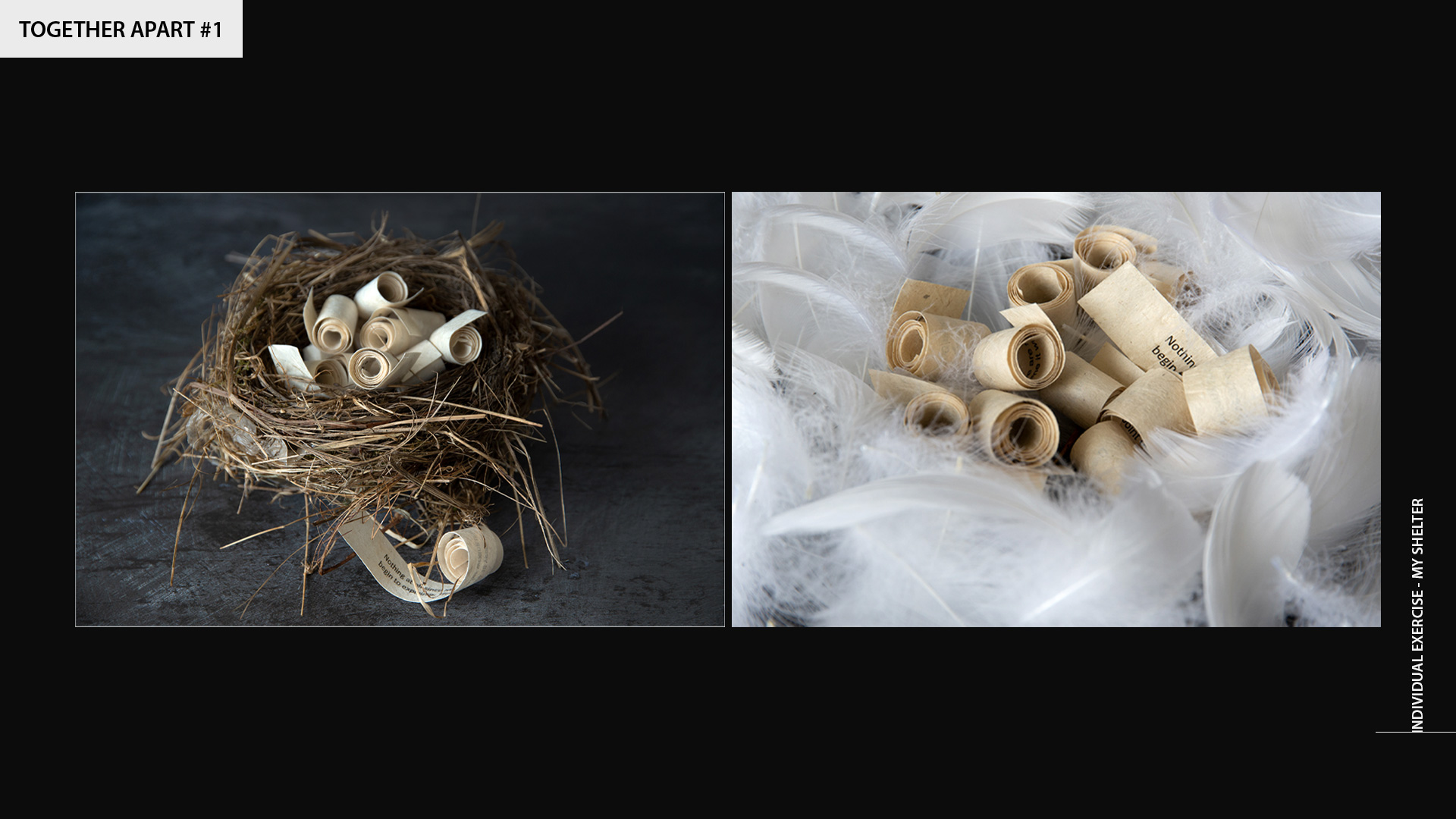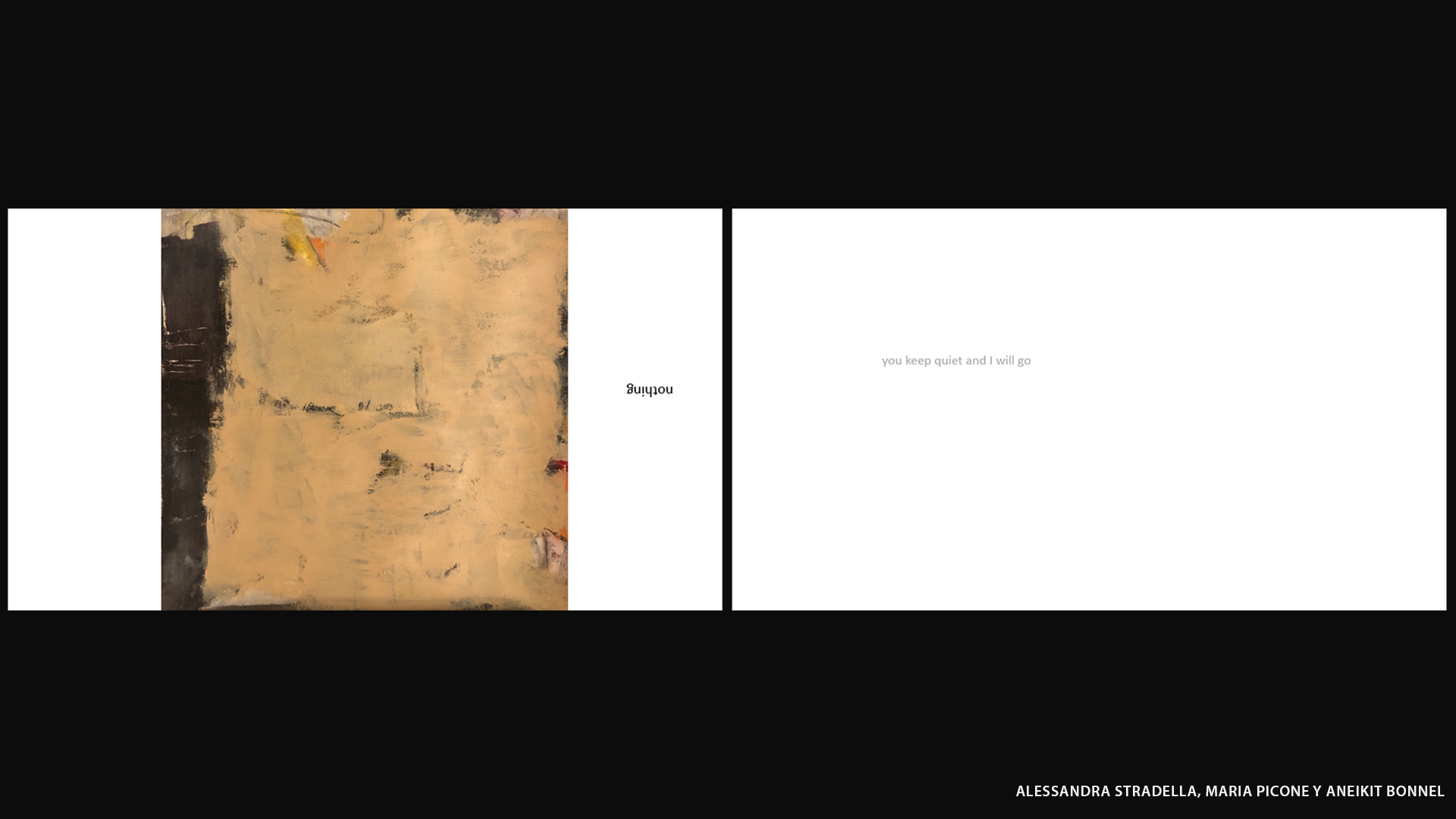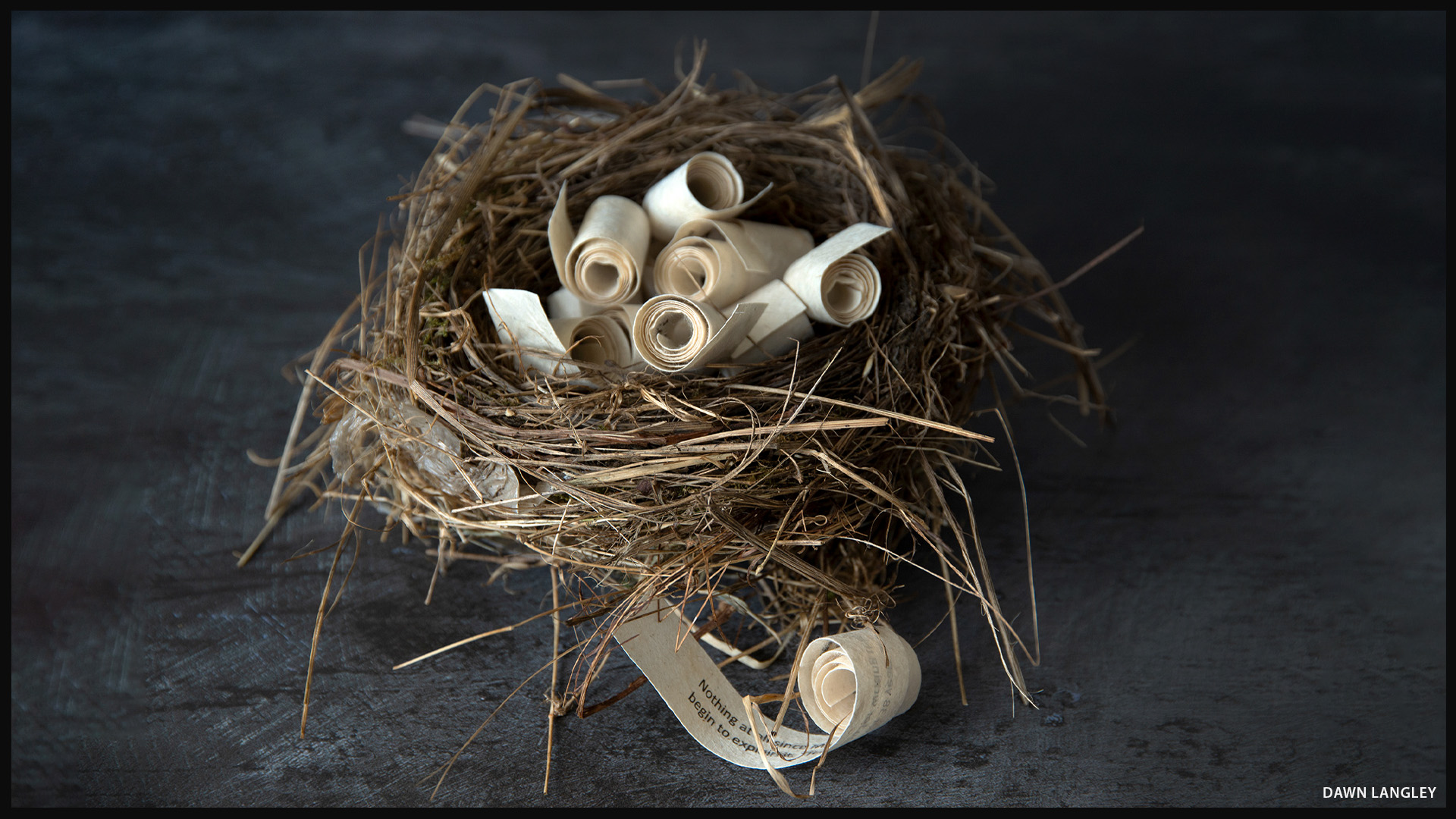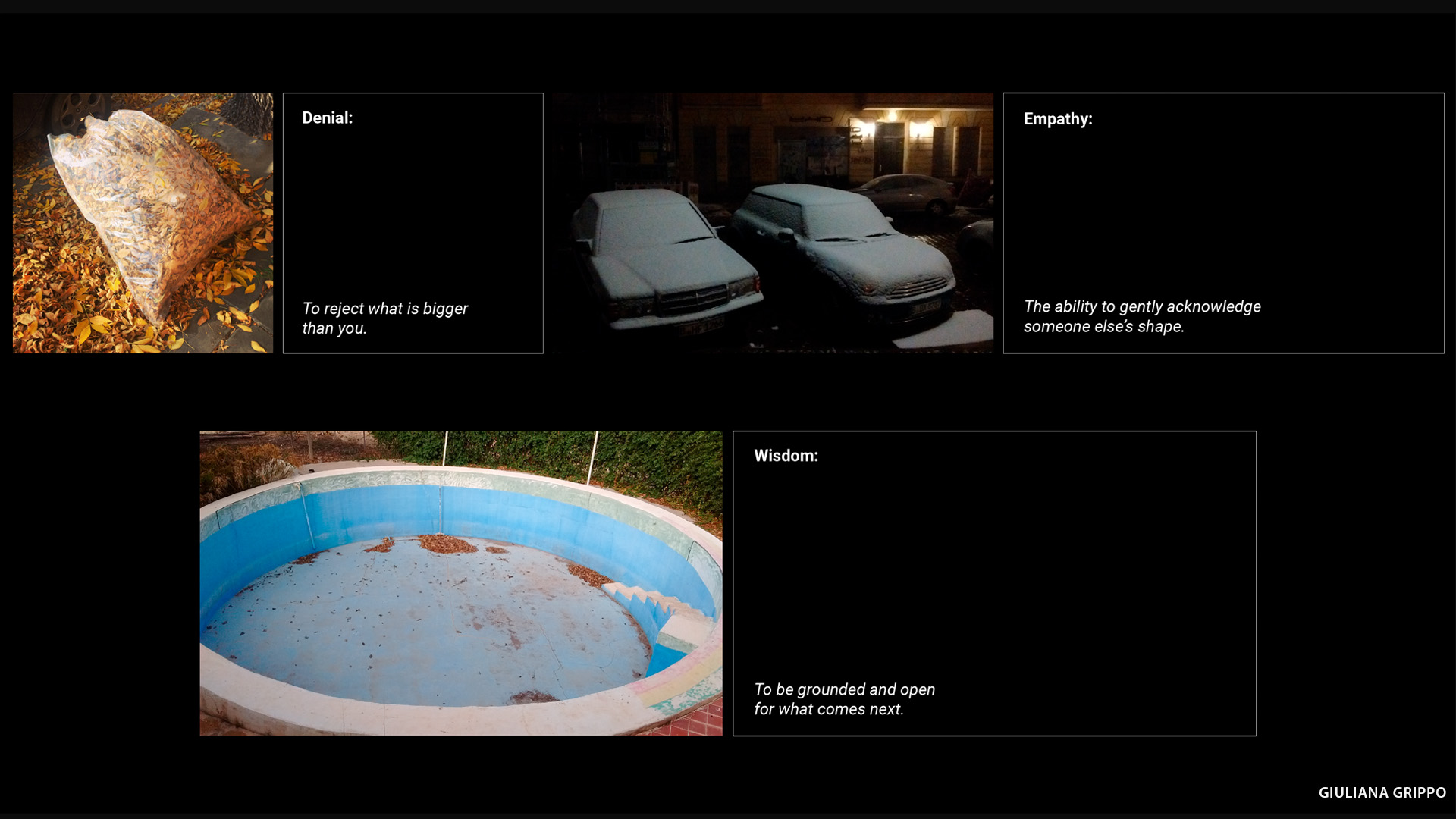Artists
United Kingdom
Dawn Langley
Together Apart: #Shelter
19.08.20 09.09.20
Dawn Langley Is an artist from the UK, currently based in South East England where she is studying a Masters in Fine Art with the University for the Creative Arts. Her practice explores how technology is impacting the way we communicate, interact and understand our world.
Digital Remains, her current body of work, is an exploration of notions of a digital afterlife. Informed by personal experience of loss this work examines the concept of digital assets and our awareness of what might become of our digital footprints after we die. Through her work she imagines an afterlife where her digital archive may degrade, distort or be appropriated.
DAWN ABOUT TOGETHER APART: #SHELTER
In an uncertain and unfamiliar world the concept of shelter encompassed for me both the physical and psychological. Shelter can be a space, a place, a feeling or relationships. The notion of ‘nest’ became a potent symbol – itself a place of shelter and nurture, but when exposed it appears fragile, vulnerable and chaotic.
Our shelters have become both digital and physical and this was woven throughout the work I created during the residency. Through Together Apart, and perhaps echoing the experiences of others across the globe, I found a shelter amongst strangers who have now become friends.
BIO
Dawn Langley
England
EXHIBITIONS
2018 | Time, Lightbox, Woking
2019 | Objection, Linear Gallery, Farnham
2019 | Re-presenting the Family Album, Social Research Association, London
2020 | Unsettling Focus, James Hockey Gallery, Farnham (forthcoming)
RESIDENCIES
2020 | Transient, online residency
PUBLICATIONS
2019 | Edge-zine Bodies of Water, online
2019 | Wild, N & Wild, A Women: Inspiring Quotes and Artistic Responses Vol 2. pp. 26-27. Wildhouse Publishing
Related Activities
Exhibitions, Together Apart
#1 | SHELTER: results
Artists in dialogue
16.12.20
During 2020, we carried out the first two sessions of Together Apart. The first session took as a conceptual and practical framework the REFUGE and the second, the NEST.
Through those starting points, both of which refer to caring atmospheres and structures for coexistence, we were able to think and create in a wide variety of directions and layers. We reflected on our pandemic context, a situation for which we had to find ourselves in the virtual non-space, but also a situation thanks to which people from many different countries were able to work simultaneously.
Assuming this complex situation, more than 20 participants per session created new pieces –some in exercise format–, took up projects that they had already worked on in the past or collectively set out to create new projects that will continue to develop beyond the scope of our meetings.
Taking these refuge and nest issues also in their complexity, we asked ourselves questions that made each of the participants involve their personal experiences, memory, memories and experiences from each of their territories. We addressed questions that sought to keep us in constant movement; at times we went through very optimistic or pessimistic visions about the possibility or necessity of having a shelter or a nest, and at other times, we were able to articulate more complex visions, enduring in intermediate and liminal states. For both, we took as a theoretical structure of support and dialogue the thought of Félix Guattari presented in The Three Ecologies (1989). His ethical-political approach that highlights the molecular domains of sensitivity, intelligence and desire, as well as his articulation of the three ecological registers (environment, social relations and human subjectivity), helped us to expand our creations and thoughts in relation to shelter and nest.
During the first session, when asked about the conditions that a refuge can have and the conditions that we would like a refuge to have, the artists (coincidentally and by chance, we had a cohort one hundred percent comprised of women) generated sculptural pieces, artists’ books, photographs, videos, dance pieces and more, reflecting on the permeability or isolation structures that a shelter can have. Also, many artists started from their bodily memories to refer to the refuge and made improvisation and performance pieces. We created in relation to the refuge conditions presented by nature and the refuges that we create to protect ourselves from certain natural conditions. Memory as a refuge and shelters for memory also arose through textile practices or from the use of jewelry or objects with which we build links. Finally, the bonds and the community as spaces that shelter and spaces that imply care was another of the axes that we explored through pieces that included readings of texts and sound activations.
Together Apart has functioned as a program that opened up possibilities for meeting and collaborative creation. It has made possible the creation of new rhythms and synchronies for a limited time but whose reverberations and echoes continue to affect in unexpected directions.
Daniela Ruiz Moreno (curator-in-residency)
Related artists
- Alessandra Stradella
- Ana Vivoda
- Aneikit Bonnel
- Anna Rose
- Ariana Pirela Sánchez
- Caia Diepenbrock
- Carla Freschi
- Christine Bruce
- Dawn Langley
- Dolores Delia
- Gina Kukulski
- Giuliana Grippo
- Janette Hopper
- Jannelle Roberts
- Jill AnnieMargaret
- Judith Elisabeth de Haan
- Male Correa
- Roseanne Lynch
- Sara Minsky
- Shereen Shalhoub






















